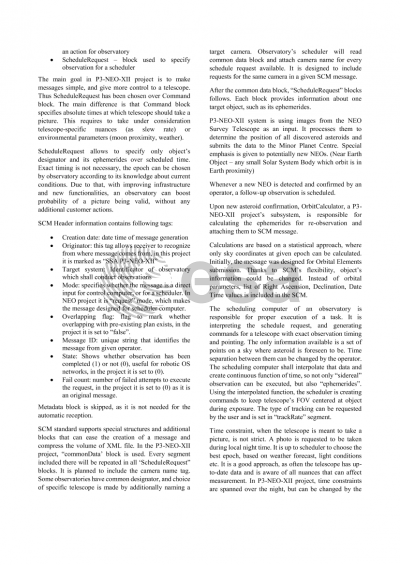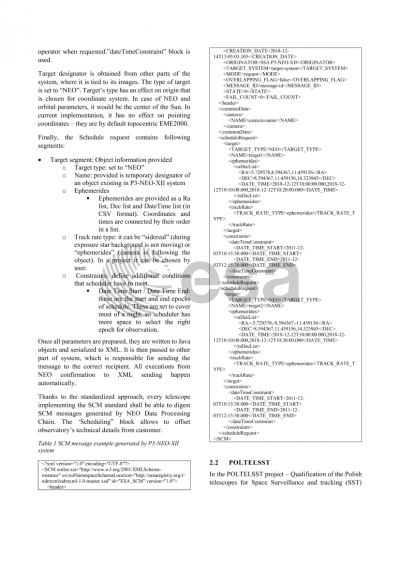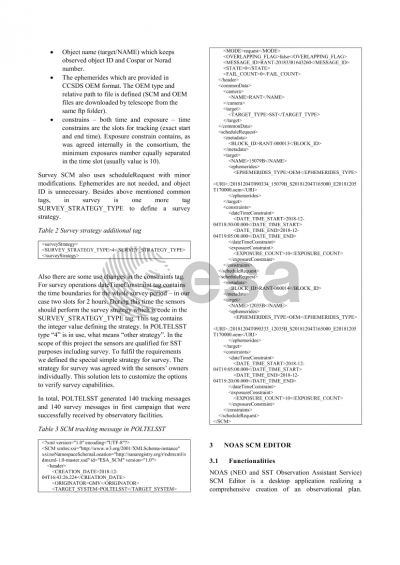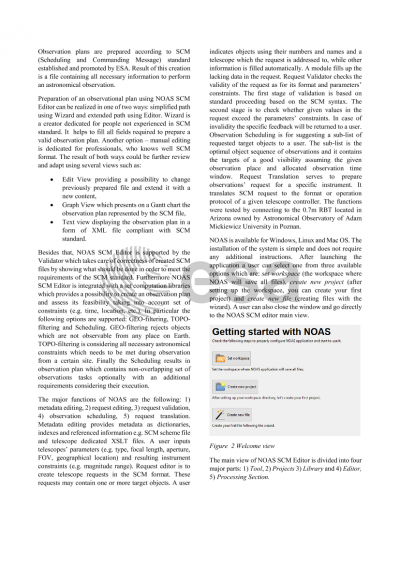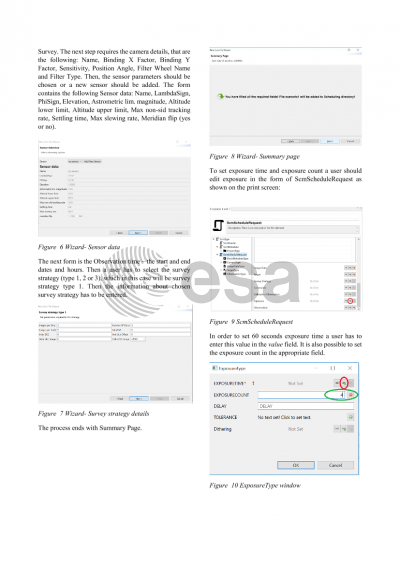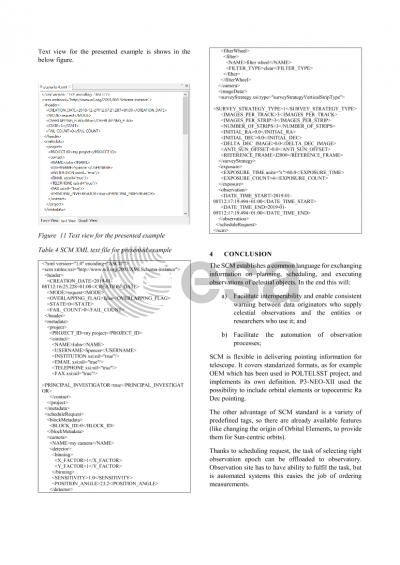Document details

Abstract
SCM, Scheduling and Commanding Message, is a new CEN/CENELEC’s standard for tasking telescopes for NEO and SST purposes based on XML structure. The standard itself is still under development, and in this paper a first operational usage is presented as part of three activities for ESA in the scope of NEO and SST.
On the one hand, the P3-NEO-XII activity within the ESA’s SSA program is devoted to the development of a so-called NEO Data Processing Chain from raw images from telescopes, particularly the new Fly-eye telescope. On the other hand, the POLTELSST activity within the Polish Incentive Scheme Program is devoted to the qualification of Polish telescopes for SST purposes. These projects, with active involvement of GMV, are one of the first attempts to create a tasking message complying with SCM standard and used under operations. The third solution involving SCM usage is NOAS (NEO and SST Observation Assistant Service) SCM Editor developed by ITTI. The functionality of this desktop application aim is to support the initiatives like POLTELSST and P3-NEO-XII in comprehensive creation of observational plans in SCM format.
In POLTELSST, SCM is particularly used for scheduling optical sensors to track man-made objects in MEO and GEO and to survey the GEO ring. In the purpose of this project the simple SCM version has been prepared in cooperation with the Polish telescopes owners. Several campaigns will be performed making use of this standard.
Within P3-NEO-XII, SCM message is used to schedule contributing telescopes to follow-up a newly detected NEO (during survey operations) in the upcoming nights.
NOAS (NEO and SST Observation Assistant Service) SCM Editor is a desktop application realizing a comprehensive creation of an observational plan. Observation plans are prepared according to SCM (Scheduling and Commanding Message) standard established and promoted by ESA. Result of this creation is a file containing all necessary information to perform an astronomical observation.
Preparation of an observational plan using NOAS SCM Editor can be realized in one of two ways: simplified path using Wizard and extended path using Editor. Wizard is a creator dedicated for people non-experienced in SCM standard, it helps to fill all fields required to prepare a valid observation plan. Another option – manual editing is dedicated for professionals, who knows well SCM format. The result of both ways could be further review and adapt using several views such as:
• Edit View providing a possibility to change previously prepared file and extend it with a new content,
• Graph View which presents on a Gantt chart the observation plan represented by the SCM file,
• Text view displaying the observation plan in a form of XML file compliant with SCM standard.
Besides of that, NOAS SCM Editor is supported by the Validator which takes care of correctness of created SCM files by showing what should be done in order to meet the requirements of the SCM standard. Furthermore NOAS SCM Editor is integrated with a set computation libraries which provides a possibility to create an observation plan and assess its feasibility taking into account set of constraints (e.g. time, location, etc.). In particular the following options are supported: GEO-filtering, TOPO-filtering and Scheduling. GEO-filtering rejects objects which are not observable from any place on Earth. TOPO-filtering is considering all necessary astronomical constraints which needs to be met during observation from a certain site. Finally the Scheduling results in observation plan which contains non-overlapping set of observations tasks optionally with an additional requirements considering their execution.
The following paper is intended to be a showcase of SCM usage in real operations. NOAS SCM Editor is a tool that can streamline the process of plan and message generation.
Preview

